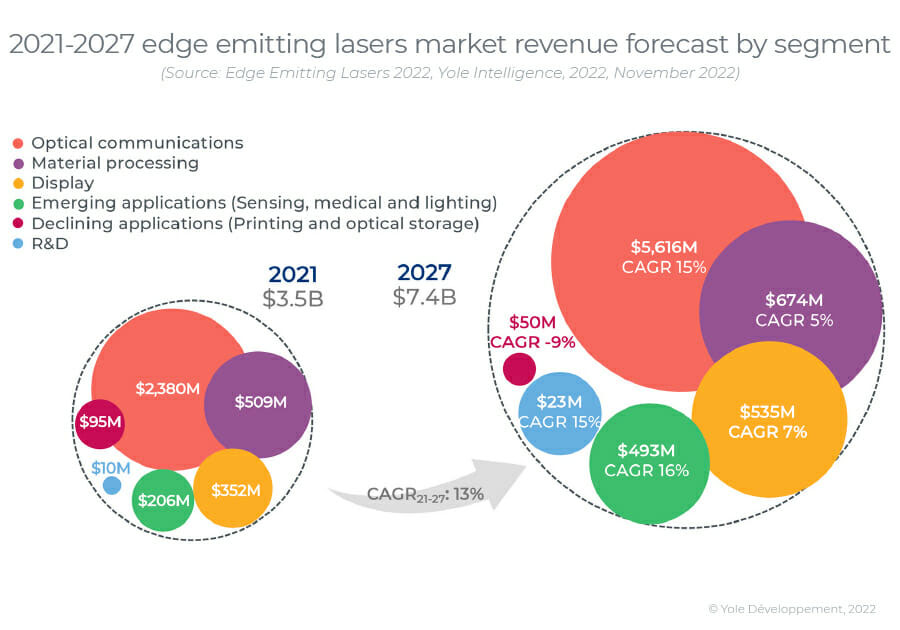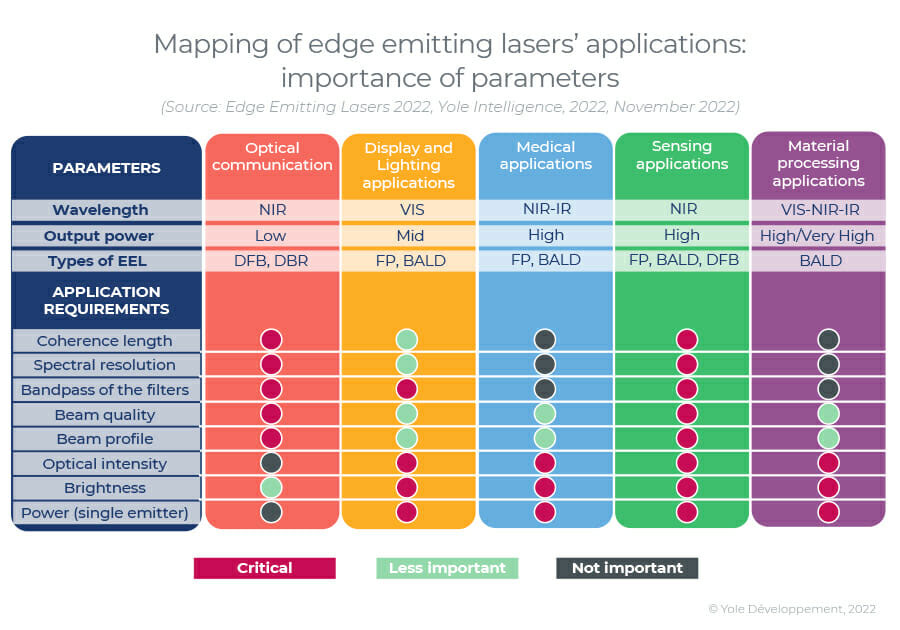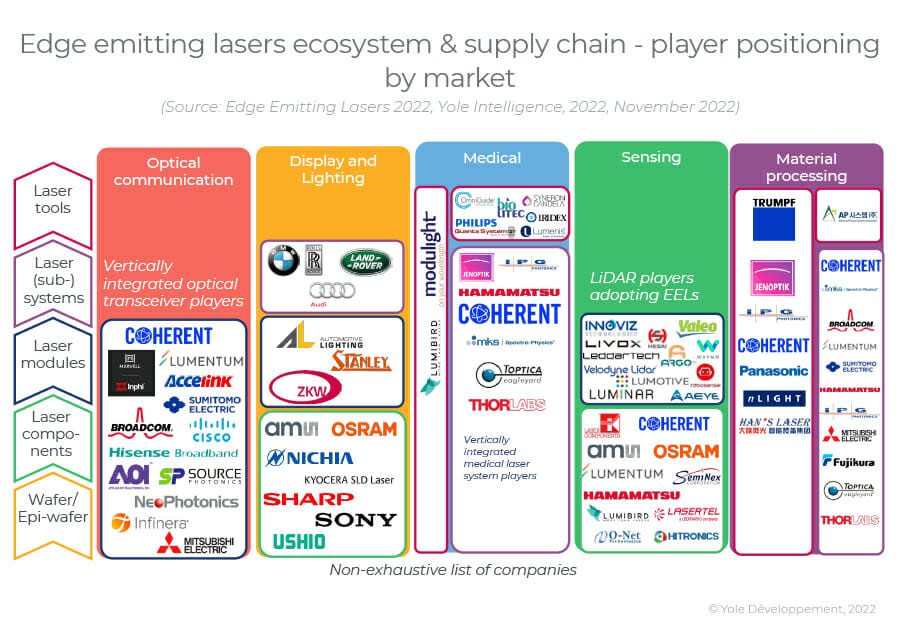News: Markets
14 December 2022
Edge-emitting laser market growing at 13% CAGR to $7.4bn in 2027
The market for edge-emitting lasers (EELs) is growing at a compound annual growth rate (CAGR) of 13% from $3.5bn in 2021 to $7.4bn in 2027, reckons Yole Intelligence (part of Yole Group) in its report ‘Edge Emitting Lasers – Technology and Market Trends 2022’.

The semiconductor laser landscape, and especially edge-emitting lasers, is highly fragmented and diversified, as laser technologies are now ubiquitous in many traditional as well as emerging applications. Edge-emitting lasers are implemented in a wide variety of types, including diode lasers, fiber lasers, diode-pumped solid-state lasers (DPSSLs) and optically pumped semiconductor lasers (OPSLs). Traditional applications cover industrial, telecommunications, scientific, and consumer markets. Specifically, these span optical communications, material processing, displays, automotive lighting, medical dermatology, surgery, and 3D sensing in light detection & ranging (LiDAR). Also, the many niche applications include military & aerospace markets and spectroscopic analysis for the life science market.
“Growth continues to be driven by optical communication, such as optical modules and amplifiers for datacom and telecom, as well as 3D sensing applications,” notes Martin Vallo Ph.D., senior analyst, Photonics (who specializes in optical communication and semiconductor lasers within the Photonics and Sensing division).

Each application is addressed by a specific supply/value chain, as a variety of edge-emitting laser device designs have been developed:
- Chip: Fabry–Perot (FP) is the most common edge-emitting laser design in current use. Other designs, such as distributed Bragg reflectors (DBRs), external cavity lasers (ECL), distributed feedback (DFB) lasers, quantum cascade lasers (QCLs) and broad-area laser diodes (BALDs), have been developed to improve critical parameters that make them suitable for specific applications.
- Packaging: There is also a wide range of package types, including TO (transistor outline), pigtailed butterfly, C-mount, D-mount, high heat load, and direct chip on sub-mount, depending on the application.

In parallel, for integrators, many questions arise, notes Yole. What is the correct laser device for an application? Which parameters are most important? Laser technology is essentially an interaction of light and matter, so new applications are still emerging for sensing, material processing, and life sciences.
Applications define device specifications, and integrators must consider several technical parameters, including wavelength, power output, spectral resolution, light beam quality, and optical intensity. Understanding application requirements and evaluating laser parameters is, therefore, key to making the right investment decisions. This is even more important as edge-emitting laser prices vary widely depending on design and technical parameters.
Edge-emitting laser market growing at 15% to $6.6bn in 2026, driven by historical applications









